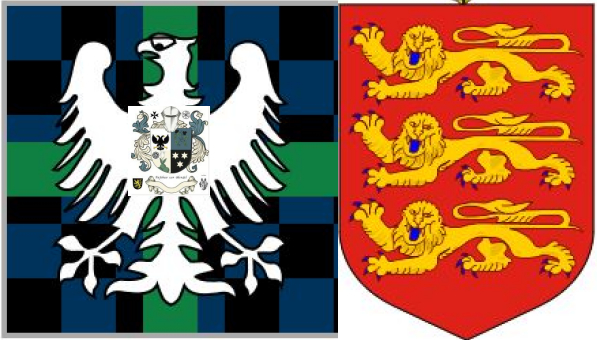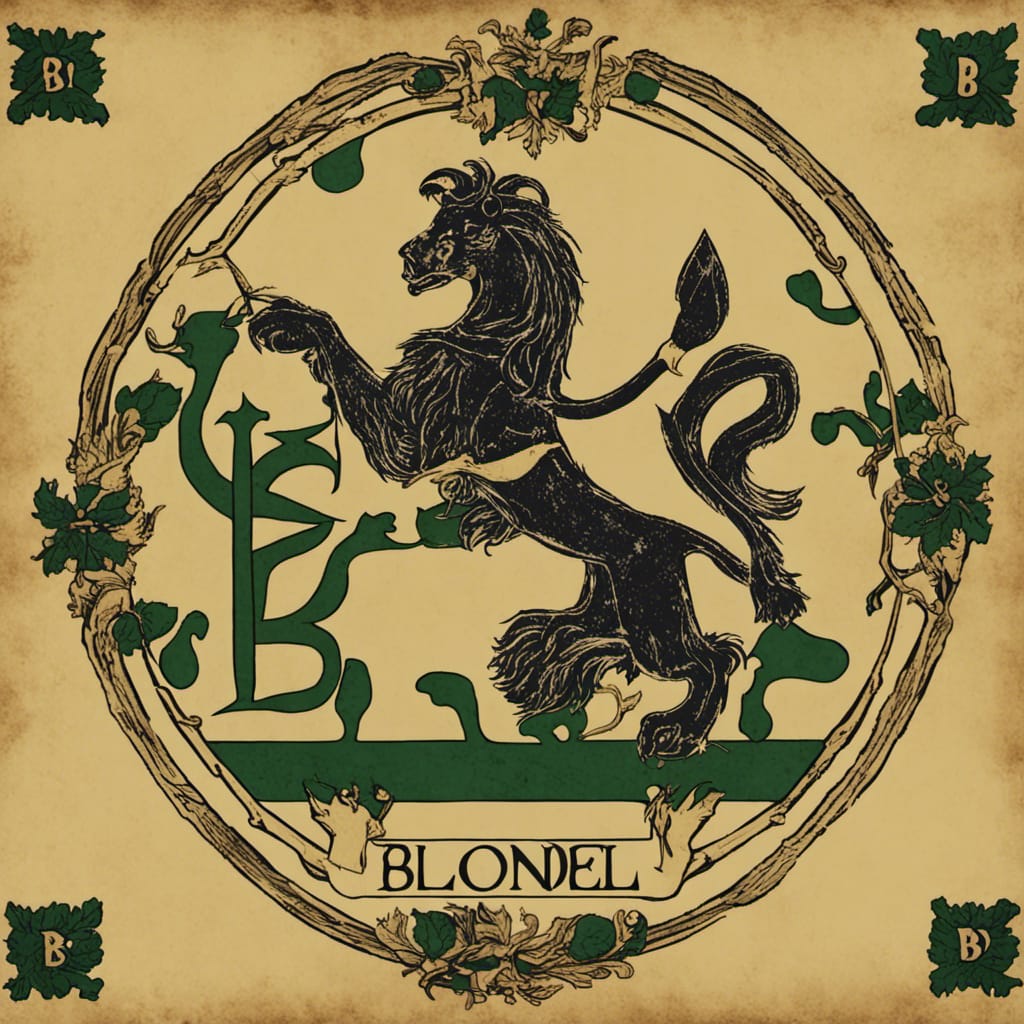


Fief Bouvees of the Fief Thomas Blondel - 1968From the Livre De Perchage of 1968 - St. Pierre du Bois & Torteval
Parcel of the ancient Fief au Cannely Special Note: The Bouvees of Blondel are in St Pierre du Bois and Torteval Parishes within the ancient 2 large fiefs of the island’s Vicomtes or Counts of Bessin and Contenin. The Fief de Thomas Blondel produced “ Livres de perchage ” in 1595, 1644, 1680, 1709, 1775, 1809, 1844, 1876, 1901, 1921 and 1968. The contents of the “ Livres de perchage ” reveal something of the history of the properties of the Territory and Fief boundaries. Several field names reflect its agricultural, social and religious history. Pre de la Hanniere recalls the growing of hemp (han ) in that meadow. Le Clos des Pommiers refers to family and not to an orchard. L’ Aumone (the alms), was once dedicated to charity.
The 7 Fief Bouvées or Bouvees of Fief Thomas Blondel are: A “bouvée” (or “bouvet” ), was indeed a smaller fief within a larger fief during the medieval period. These smaller fiefs were often granted to vassals by a lord in exchange for military service or other obligations. The term is less commonly used today, but it played a significant role in the feudal system, helping to structure the complex hierarchy of land ownership and duties. * Twenty Vergees makes a Bouvee and 4 Vergees are a Guernsey Acre. 21 Feet Square is a Perch, and 40 Perches is a Vergee. 2 1/2 vergees are about 1 English Statute Acre. Fief Duquemin is a Bouvee that is part of the Blondel territory adn Livre de Percharge of 1968. 1. Bouvee es Paints 2. Bouvees Torquetil et Bourgeron 3. Bouvee dite de Thomas Guilbert 4. Bouvee de la Bufardiere 5. Demie-bouvee a Louvestre 6. Bouvee dite de Surcousse 7. (Fief Duquemin) Bouvée dite de Duquemin or Fief Du Quemin - T Robilliard (Pleinmont) was lord of the Fief Bouvée Duquemin in Torteval in the late 1800s. Bouvée Duquemin was also part of Fief Thomas Blondel territory. See: Fiefs and their Seigneurs. From Guerin's Almanack, 1890, in the Library's News Cuttings on Guernsey IV, p. 79, Staff. https://www.priaulxlibrary.co.uk/articles/article/lords-manors 8. There is also a Fief la Cour Ricard is mentioned in various documents which may also have been part of Fief Thomas Blondel or other territory in St. Pierre du Bois Parish in the late 1700s. Birdwatchers’ book proceeds help to create nature reserve on La Cour Ricard Guernsey | Guernsey Press ** The fiefs of Thomas Blondel, Guillot Justice, Bouvee Duquemin adn Cour Ricard total about 238/9 vergees in Torteval and St. Peter in the Wood. They are parts of the ancient Fief au Canelly. In 1890 the Seigneur of Fief Blondel was Pierre Robilliard (Pleinmont). His Brother T Robilliard (Pleinmont) held the Torteval Fiefs Duquemin, Fief Guillot Justice and Fief Cour Riqua or Ricard. In the Livre de Percharge of Fief Thomas Blondel year 1968, Bouvee Duquemin is included as part of Thomas Blondel again, and we are to assume that Guillot Justice and Cour Ricard/Riqua were also transferred back to the Seigneur of Thomas Blondel. Below Seigneurs. From Guerin's Almanack, 1890, in the Library's News Cuttings on Guernsey IV, p. 79, Staff. P Robilliard (Pleinmont) Seigneur Thomas
Blondel Torteval
By 1898, Pierre Robilliard dies in possession of Fief Thomas Blondel and other Fiefs such as llot Justice, Du Quemin and La Cour Ricard.
Citation about the Fiefs Fief Bouvee Duquemin reference: Guernesey | Les iles Anglo-Normande | Le Petit Manchot | histoire patrimoine personnage (le-petit-manchot.fr)
The Last Douzaine of Fief Blondel was:1. Laurence Guille 2. George_william Le Ray 3. Daniel-Nicholas Girard 4. Walter-Peter Girard 5. John Mahy 6. John-Alfred Tostevin 7. Pierre-Tostevin 8. Reginald-Franklyn De Garis 9. Walter-Frederic Gallienne 10. Sydney-John Brehaut
The Legal Status of the Holder of a Bouvée as a Seigneur or LordIn the medieval feudal system, a "bouvée" (or "bouvet" or "bovate") was a smaller fief granted within a larger fief. The recipient of this grant, though a vassal to the lord of the larger fief, was also legally recognized as a seigneur or lord of the "bouvée" itself. This dual role was central to the hierarchical structure of the feudal system, where land tenure and the associated rights and obligations created a complex web of authority and loyalty. 1. Granting of the Bouvée and Seigneurial Status
2. Rights and Responsibilities as a Seigneur
3. Sub-infeudation and Feudal Hierarchy
4. Legal Recognition and Seigneurial Powers
5. The Seigneur of the Bouvée in the Feudal System
6. Legacy and Historical Significance
In conclusion, the holder of a "bouvée" grant was not just a subordinate vassal but also a seigneur or lord of that smaller fief. This legal status allowed them to exercise lordly powers within their domain, managing the land, administering justice, and fulfilling the feudal obligations that sustained the hierarchical structure of medieval society.
|
Seigneur de la Fief of Blondel Lord Baron Mentz of Fief Blondel Geurnsey Crown Dependency Seigneur Fief of Blondel George Mentz Lord Baron of Fiefdom Blondel Freiherr of Fief Thomas Blondel Feudal Lord of Baronnie - Noble Fief Barony Friherre > Fief Bouvees of Fief Thomas Blondel Guernsey Seigneurs and Dames Travel Research Lord Paramount Feudal Barons The Seigneur Order Patron George Mentz Charter of Liberties Deed & Title Fief Blondel Islands Viking Kingdom Fief Worship Fiefs of the Islands ECS Extended Continental Shelf Styles and Dignities Territorial Waters Blondel Privy Seal Fief Bouvees of Fief Thomas Blondel Guernsey Court of Chief Pleas Fief Court Arms Motto Flower Fief de l'Eperon La Genouinne Kingdom of West Francia Fief DuQuemin Bouvée Phlipot Pain Bouvée Torquetil Bouvée Bourgeon Bailiwick of Ennerdale Channel Island History Fief Direct from the Crown A Funny Think Happened On the Way to the Fief Guernsey Bailiwick of Guernsey - Crown Dependency Confederation des Iles Anglo-Normandes Sovereignty Papal Bull Research Links Norse Normandy Order of the Genet Order of the Genet Order of the Star Est. 1022 Knights of theThistle of Bourbon Count of Anjou Fief Rights Blondel and King Richard Press Carnival Manorial Incidents Appointments of Seigneurs Store Portelet Beach Roquaine Bay Neustrasia Columbier Dovecote Fief Blondel Merchandise Fief Blondel Beaches Islands Foreshore Events Fiefs For Sale Sold Lords of Normandy Fief Coin Viscounts de Contentin Fief Blondel Map Feudal Guernsey Titles Board of Trustees The Feudal System Hereditaments Chancellor Flag & Arms Fief Videos Guernsey Castle Sark Contact Advowson Site Map Disclaimer Freiherr Livres de perchage Lord Baron Longford Income Tax Guernsey Valliscaulian Order Saint Benedict of the Celestines Society of Divine Compassion Dictionary Count of Mortain Seigneur de Saint-Sauveur Seigneur of Fief Ansquetil Top Success Books Datuk Seri George Mentz Order St. Benedict OSB Celestines Order of the Iron Crown Order of the White Falcon Colonel Mentz Order Red Eagle Order St. Louis Order Holy Ghost Order of Saint Anthony Order of the Black Swan Order of St Columban Order of the Iron Helmet Livonian Brothers of the Sword Fief treizième and Direct from Crown Valuation Fief Blondel Prince of Annaly Teffia
Feudal Lord of the Fief Blondel of the Nordic Channel Islands Guernsey Est.
1179
Feudalherr - Fief Blondel von der Nordischen Insel Guernsey Est. 1179
New York Gazette - Magazine of Wall Street -
George Mentz -
George Mentz - Aspen Commission - Mentz Arms
Counselor George Mentz Esq. - Seigneur Feif BlondelBaron Annaly Baron Moyashel Grants to Delvin About Longford Styles and Dignities The Seigneur Court Barons Fiefs of the Islands Longford Map The Island Lords Market & Fair Fief Worship Channel Island History Fief Blondel Lord Baron Longford Fief Rights Fief Blondel Merchandise Events Blondel and King Richard Fief Coin Feudal Guernsey Titles The Feudal System Flag & Arms Castle Site Map Disclaimer Blondel Myth DictionaryMentz Scholarship Program 101 Million Donation - Order of the Genet Knighthood |





George Mentz Education -
Commissioner George Mentz
-
https://finance.yahoo.com/news/commissioner-george-mentz-clinches-influencer-180000705.html
-
George Mentz News -
George Mentz Net Worth - George Mentz Noble Tilte -
George Mentz -
George Mentz Trump Commissioner -
George Mentz Freiherren Count Baron -
George Mentz Global Economic Forum -
George Mentz Donates Millions